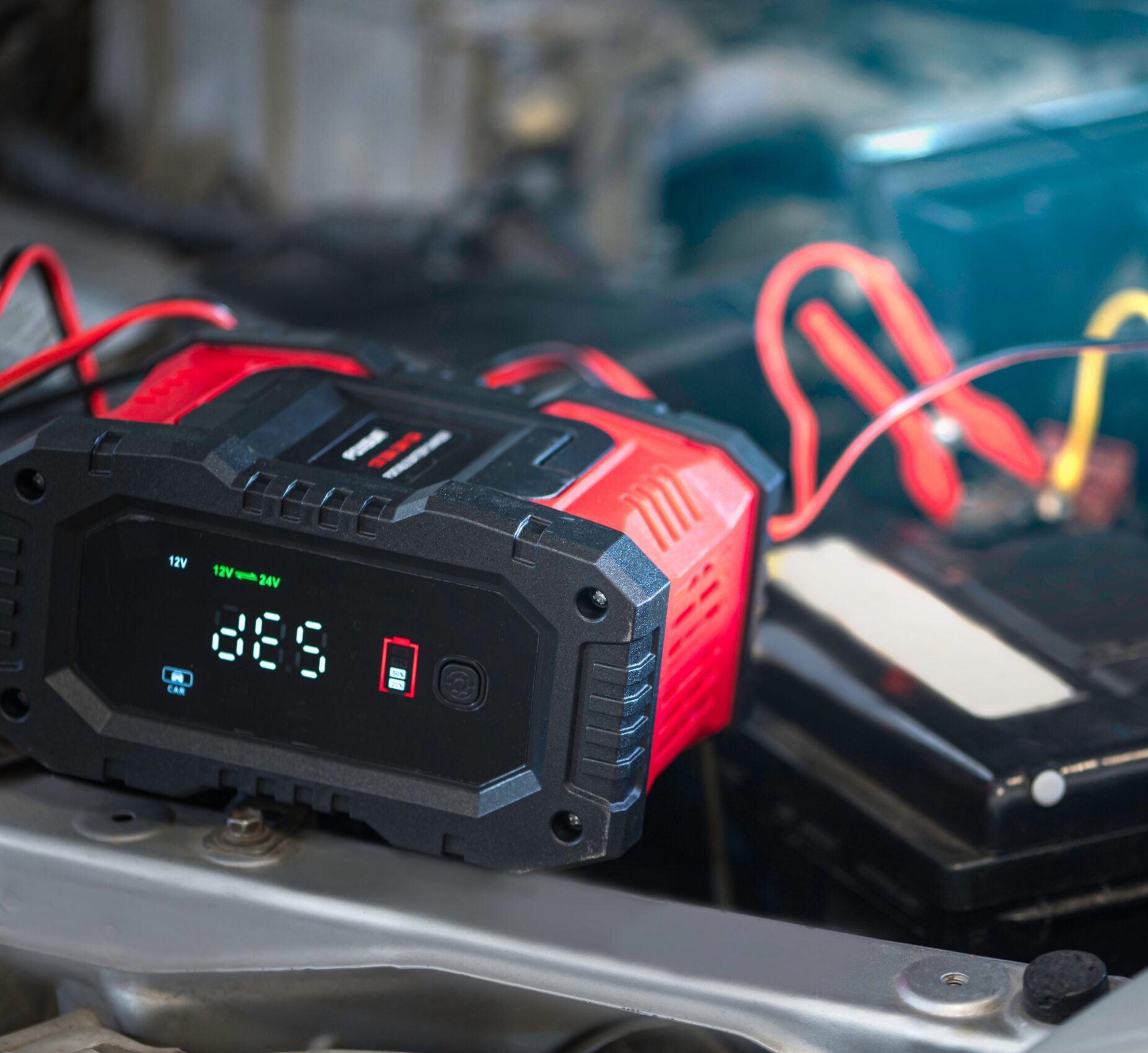Article takeaways
- Battery tenders are useful slow-charging devices that provide a car battery with just enough power to keep it from losing a charge.
- A battery tender is essential when keeping a vehicle in long-term storage, as vehicle batteries lose power over time.
- From solar-powered chargers to multi-bank options, there are plenty of battery tender options available to meet your needs.
If you’re planning on putting a vehicle in storage for a long time, you’ve probably considered the risk of returning to your unit only to find your car battery dead. This is a reasonable worry–if a car isn’t used for an extended period, the battery can drain and might need an expensive replacement. To prevent this, many vehicle owners will spend a little extra on a battery tender, a device that provides just enough power to the car battery to keep it from completely draining over time.
In this article, we’ll go over what a battery tender can do, why it’s an important tool for your storage kit, and how to choose the right one for your needs.
What is a battery tender?
A battery tender, also known as a battery maintainer or trickle charger, is a device that can very slowly recharge a car or vehicle battery to prevent it from draining completely. Car batteries are traditionally charged through the car’s alternator during regular driving and lose a small percentage of their charge per day if not used, and despite the benefits of long-term auto storage, that percentage adds up over time.
Battery tenders provide a charge at approximately the rate a battery discharges, keeping the level steady over time as long as the device is powered–some battery tenders also feature smart technology, automatically adjusting the charging rate to the rate the battery is losing power. These devices can charge vehicles of all sizes, from motorcycles to sports cars to boats.
Battery tenders differ from other battery chargers in the amount of power they provide to the battery. A standard car battery charger provides enough power to fully recharge over a short time, while battery tenders provide just enough power to keep the battery from losing a charge.
What options should I look for when shopping for a battery tender?
Basic vs. smart battery maintainers
The most basic and least expensive battery tenders available will simply provide a steady charge to a car battery as long as they’re connected. However, if you’re willing to pay a little extra, it may be worth investing in a smart battery tender, which can automatically adjust its rate of charge based on how fast your battery loses power. These smart tenders also feature safety shutoffs that won’t provide power if the device is connected backward, which can be extremely dangerous.
Solar battery tenders
Most trickle chargers need to be powered using a wall outlet, but a solar-powered battery tender can maintain a charge by simply being exposed to sunlight. These typically cost a bit more than plug-in chargers, but if your vehicle is being stored outdoors, this can save you time and money recharging the device. If you’re storing your vehicle indoors, look into units with electricity and outlets so you can plug your tender in.
Multi-bank options
If you’re storing multiple vehicles, it may be worth investing in a multi-bank battery tender to keep multiple batteries maintained with a single device. High-end battery tenders with multiple charging banks will even allow you to provide different voltages to different vehicles at the same time.
Why should I consider investing in a battery tender?

Everyday vehicle owners and car enthusiasts alike should consider investing in a battery tender, especially for storage purposes. Let’s go over a few benefits of using one.
- They can extend the life of your car battery. It’s best practice to replace a battery the first time you find it dead, even if you can jumpstart it. Using a battery tender will ensure your battery still has a charge and will last much longer.
- They can save you money in the long run. Replacing a battery is expensive, and jumpstarting one runs the risk of damaging your vehicle’s electrical systems. Keeping a battery charged with a trickle charger eliminates this risk.
- They can maintain multiple vehicle types. From dirt bikes and ATVs to vans, SUVs, trucks, and even boats, using the right trickle charger will ensure your vehicle is ready to drive right out of storage.
Certain situations will require a battery tender more than others. If you put a vehicle away for a season or two, such as an off-road vehicle you only drive during the summer, you should use a trickle charger to make sure the battery is ready to go when you unload the vehicle. Classic cars with less robust electrical systems can also benefit from a battery charger, as they tend to leak more power over time.
How do I choose the right battery tender for my needs?
Selection criteria
The first thing to look for when shopping for a battery tender is whether the device you’re looking at is compatible with your vehicle’s battery type. Modern trickle chargers are usually equally compatible with lead-acid, AGM, and gel batteries, but it’s worth researching to make sure you don’t buy a charger that won’t properly charge the type of battery you’re working with.
You also need to make sure the charger you buy is capable of charging the right voltage and delivering the right amperage–most cars require a 12V battery and 1.25 amps of power. Additional useful features include an automatic switch to shut off the charger when the battery is full or the weather conditions get too high, as well as automatic short detection so the charger doesn’t work if you connect the clips to the battery the wrong way.
Different trickle chargers will charge differently depending on what you buy. Some chargers have an option to work as a standard charger, providing enough power to bring the battery to a full charge. Others will simply maintain the level of charge the battery had when you first plugged it in. Compare your options and choose the one that best meets your needs.
Proper usage
Once you’ve got your charger and your vehicle is in a storage unit with an outlet, open the hood of your vehicle (or wherever your battery is stored) and attach the red charger clamp to the positive battery terminal, then attach the black clamp to the negative terminal. Finally, plug the charger into the wall outlet, and it will begin providing power to the battery.
Always remember to attach the charging clamps as directed, with the red clamp to the positive terminal first, and don’t plug the charger into the wall until it’s connected. Attaching the clamps backward runs the risk of a fire (something you’ll avoid if the charger has an automatic shut-off feature), and plugging the charger in first runs the risk of shorting the battery or causing sparks, which can deliver dangerous shocks.
Battery tenders in brief
If you’re going to be storing a vehicle for any length of time, it’s worth looking into battery tenders so you can protect and extend the life of your vehicle battery. Keep a look out for storage facilities with power routed to their units, or if you’re using a solar charger, look into outdoor vehicle storage with plenty of sunlight. If set up properly, your vehicle will be ready to go with a charged battery right out of the unit.
Looking for the right unit to store a vehicle of any size? Want to know how to find units with outlets? Storage.com can help! Use our search tool to compare self-storage facilities near you, and check out our blog to learn about the right way to find facilities with powered units–and why they often don’t advertise them.


![The Ultimate RV Packing List & Checklist [Printable]](https://blog.storage.com/wp-content/uploads/2025/08/shutterstock_2490234073-e1756329334567.jpg)



![Relocating RVs: An Expert Guide to Finding RV Relocation Deals and Cheap Motorhomes for Rent [2025]](https://blog.storage.com/wp-content/uploads/2025/03/rv-relo.jpg)